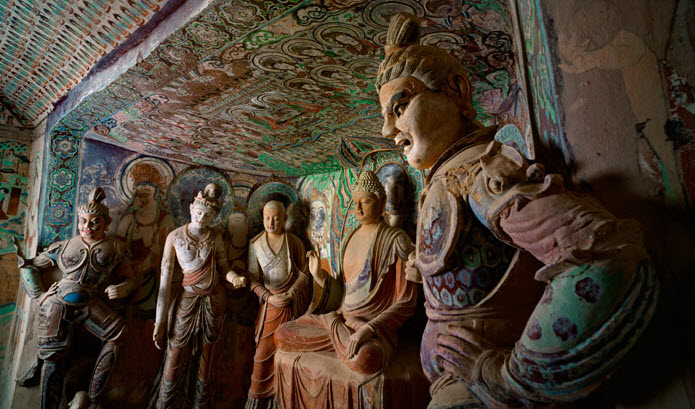 |
| Photograph by Tony Law for National Geographic |
Check out the Mogao Caves in the Dunhuang oasis of the Gansu Province in China, an important stop along the ancient Silk Road.
The caves are a World Heritage site. According to UNESCO, "492 caves are presently preserved, housing about 45,000 square meters of murals and more than 2,000 painted sculptures." Photographs of some of the murals and sculptures are stunning, especially those in Cave 302 from the time of the Tang Dynasty.
The National Geographic published a great photographic essay in 2010 called "Caves of Faith. And the British Museum has a good exhibit of Mogao murals called "The 'Caves of the Thousand Buddhas.'"
Work on the caves first started in the 4th century CE and continued for over 1000 years. Consequently, the style of art changed. According to Khan Academy, the early caves reflect Indian and western influence while later caves reflect Chinese influence.
The paintings also reflect changes in belief. For example, early paintings included the Jakarta Tales while later painting deal with Pure Land Buddhism Painters developed colors using pigments and gold and silver leaf. How were the mural made? They were all man made using reeds, straw, and mud covered with a lime paste. Here are some other great resources for teaching about the caves.
- The New York Times has an annotated slide show called "The Caves of Dunhuang"
- Sacred Destinations has a good history for the caves along with some good images
- Khan Academy also has a good overview of the caves
No comments:
Post a Comment